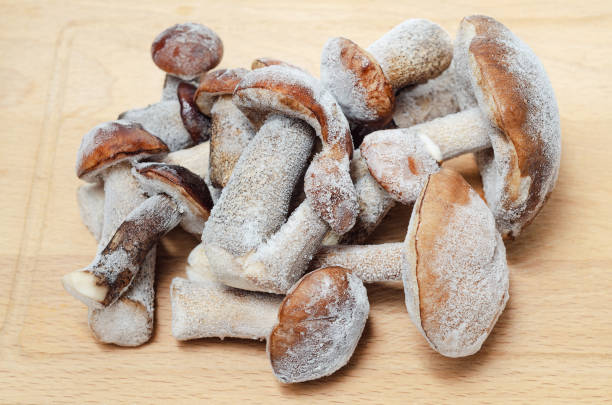For many people, mushroom dishes are very tasty. During the mushroom season, mushroom lovers can’t get enough and often gather and eat lots of the edible varieties. If there are any leftovers, use our tips for freezing mushrooms and reheating mushrooms. Tips and instructions for freezing food help to ensure that nothing goes to waste.
If more mushrooms are picked than eaten during a trip to the woods, you need our tips on freezing mushrooms and reheating mushrooms. Of course, mushrooms can be dried well and then used for sauces and soups or simply as a flavor enhancer. But dried mushrooms still don’t taste as good as fresh ones. Only one thing helps: Freeze mushrooms fresh.
Freeze mushrooms

Mushrooms can be frozen raw, blanched, or cooked. Which method works better is primarily a matter of opinion and also a question of the available space in the freezer. Mushrooms that have already been prepared take up less space because they lose a lot of volumes when steamed by collapsing. Whichever method you choose, here are all the tips for preserving mushrooms.
Step by step guide
If the delicious finds are very sandy or dirty, clean them carefully with a soft mushroom brush. The mushrooms should be thoroughly cleaned and washed before freezing. You can slice the larger ones. Then it is best to freeze them in a freezer bag or a can. There is a simple trick to prevent the individual mushroom slices from sticking together too much when freezing: after preparation, lay the slices out on a tray or large chopping board and put them in the freezer for 24 hours. Only then do they go into freezer bags or freezer boxes. This has the advantage that you can later remove exactly the right amount individually if required. Also, note our tips for freezing beans.
Cooking with frozen mushrooms
If you want to make a mushroom dish from frozen mushrooms, do not thaw them. You can simply put them in the pan as they are, frozen, and cook with them. They are added to the dish at the end of the cooking time and thawed in the hot food, as well as being cooked briefly. Mushrooms have a cooking time of 15 minutes. In most cases, frozen mushrooms taste just like fresh mushrooms.
Special case chanterelles
Freezing mushrooms is a good way to make them last longer. However, a few types of mushrooms such as chanterelles (also called chanterelles in Austria) lose their flavor when frozen raw. It is better to blanch them slightly or prepare them completely before freezing, otherwise, they will become bitter. See also our tips for washing and cleaning chanterelles.
Freeze mushrooms how long
The frozen mushrooms can be kept for a year without losing their taste. The edible mushrooms can be frozen raw, frozen blanched, or frozen cooked for the same length of time. Chances are your stash will run out over the course of a year as there are so many delicious healthy dishes made with mushrooms. At the end of the season, you can then go busy collecting new mushrooms.
Warm-up mushrooms

But what happens if there are leftovers from a mushroom meal? Can they be reheated or is it harmful to eat reheated mushrooms? Grandmother always warned against reheating mushroom dishes, and she was right in her day. Mushrooms consist almost entirely of protein and water, and protein breaks down relatively quickly. This can result in toxic decomposition products. However, this does not happen or only very slowly if the mushrooms are stored in a cool place and not at room temperature. So if the rest of the mushroom dish goes straight into the fridge, it can be stored for a good 24 hours. If the mushroom dish is first stored in a cool place and then well heated, it can be enjoyed with an appetite and without any risk.
Useful for mushroom fans
If you enjoy preparing mushrooms and enjoy making mushroom dishes, then having the right tools is a great thing for you. A mushroom brush for cleaning mushrooms is very useful because they allow very gentle cleaning even without water. Incidentally, the brush can also be used to clean other delicate types of vegetables, such as peppers, tomatoes, or potatoes.


